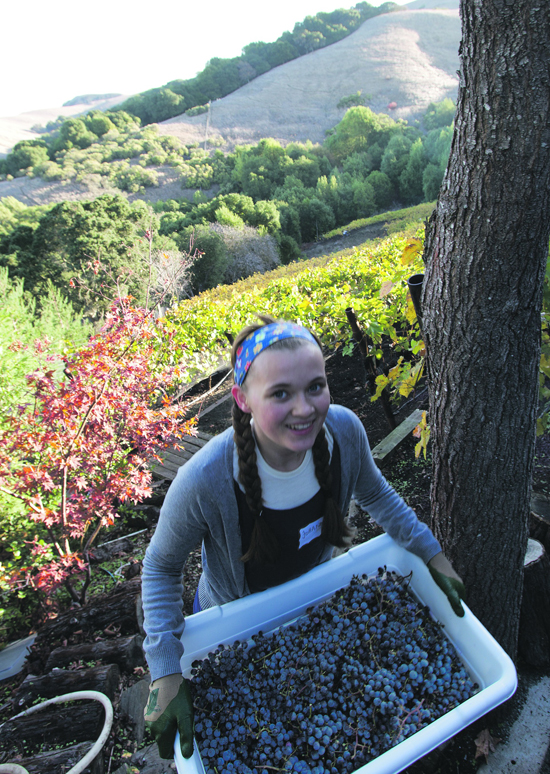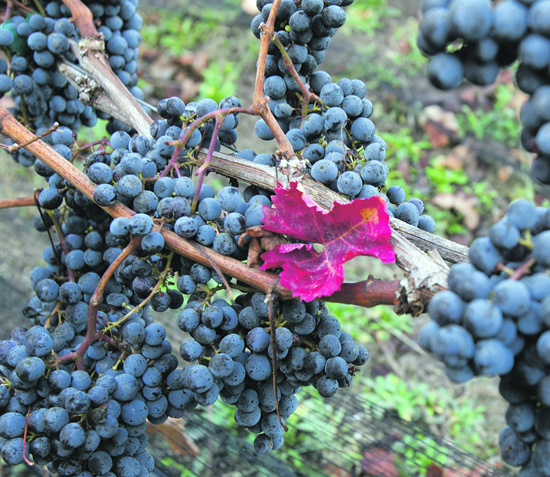
| ||||||
Spring was very wet and summer never really settled in; grapes took longer to mature and develop acceptable sugar content. The wet spring seemed to foster an explosion of wildlife - raccoons and birds devastated some vineyards. Areas that stayed damp were challenged by powdery mildew, a fungus that dramatically impacted the yield.
However, producers are optimistic. The 2010 production should be unique, probably with a lower alcohol content (low sugar), but boasting great elegance and flavor. "The wines are going to be very good, well balanced and easier to drink," says Dave Parker of Parkmon Vineyards, "people's taste will become more refined. 2010 will be a year to remember and keep."
"The slow ripening this year will develop a deeper flavor," agrees Susan Captain of Captain Vineyards in Moraga, "Every year is different, each bottle tells the story of what happened that year." Captain says the ideal sugar level is between 22 and 24 percent. "The higher the grade the higher the alcohol level," she says, "for me 22.5 percent is good, I'm not looking for big alcohol, I'm looking for flavor."
Mildew was also a problem for many vineyards this year. "I should have harvested three times the grapes I ended up picking," says Peter Cacioppo, who owns Eagle Hill Vineyards and Winery, "the powdery mildew prevention was not done enough times; we are all learning as we go." Cacioppo has a manager who does the maintenance for him and sprays the fungicide.
Cold weather and fungus were not the only threats to grapes this year. "When talking to some of the other members, it seems that there are some common issues being faced by the growers, such as: raisining/bunching of some of their crop, raccoons, birds, disappearing fruit on rows," wrote Lafayette grower Bill Scanlin of Deer Hill Vineyards, on the Lamorinda Winegrowers Association blog.
Carol Haag of Moraga says that she lost 60%-70% of her crop to raccoons. The only way she found to get rid of them was to leave a radio on all night near the vineyard. Cacioppo has a different strategy, "I leave my two German Shepherds out at night the last three weeks before harvest, "they keep raccoons at bay," he says.
Parker said he would not let his dog out, but that he had raccoons trapped last year and that kept the population close to his property under control. Other growers consider the raccoon problem to be so severe that they contacted the Department of Agriculture in Concord and will consider trapping them. "We live in a semi-rural environment with plenty of the natural habitat for the raccoons in between our vineyards," says Parker, "it's normal to see so many of them."
"A lot of people dream of being a grower, but it is a lot of work and worry," says Captain, "each year gives you a different story, and in the end it's also a lot of fun."
For more information:
Captain Vineyards: www.captainvineyards.com
Parkmon Vineyards: www.parkmon.com
Lamorinda Winegrower Association: www.lamorindawinegrowers.com.
For those interested in acquiring a property with a large vineyard, Peter Cacioppo is selling his estate, www.lyndasnell.com.

Reach the reporter at:
Copyright
